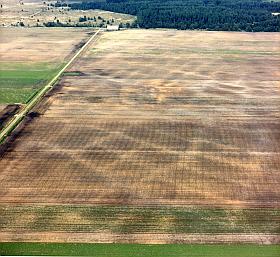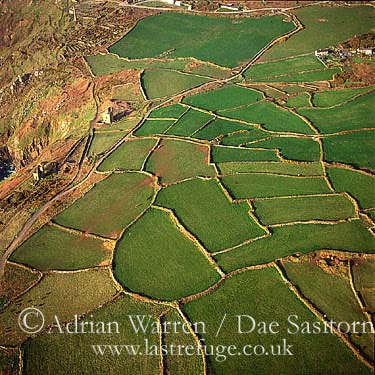Celtic Field
Celtic Fields ( English), sometimes Celtic fields are small, more or less rectangular fields of bronze, iron and Roman times, the cultivation of ancient grains such as einkorn, emmer and spelled. This form of cultivation is called celtic fields since it was first recognized in the British Isles and was falsely implicated in the Celtic period. The fields were not introduced by the Celts. They existed previously and also in the proto- Germanic and other fields.
The fields had 20 to 50 m on a side and were surrounded by a small wall. The ramparts protected the fields from sand flight and had a similar function as the Knicks today. Often, the fields lay like a chess board next to each other. Occasionally, the boundary walls are still visible in the landscape, as in Dorset, Burderup Down ( Wiltshire ) in the UK at the Céide Fields in Ireland or on the Noordsche Veld in Drenthe in the Netherlands.
Excavations on the island Geest Flögeln these fields were detected in an area of more than 100 acres. Also in the Geest in Kleinenkneten they are documented by aerial archeology. In contrast to the British fields, where the walls were applied as boundary walls, were used in Flögeln as arable beds. Due to the relatively small size of these fields is to be concluded that they served to supply a single family or farm community.










